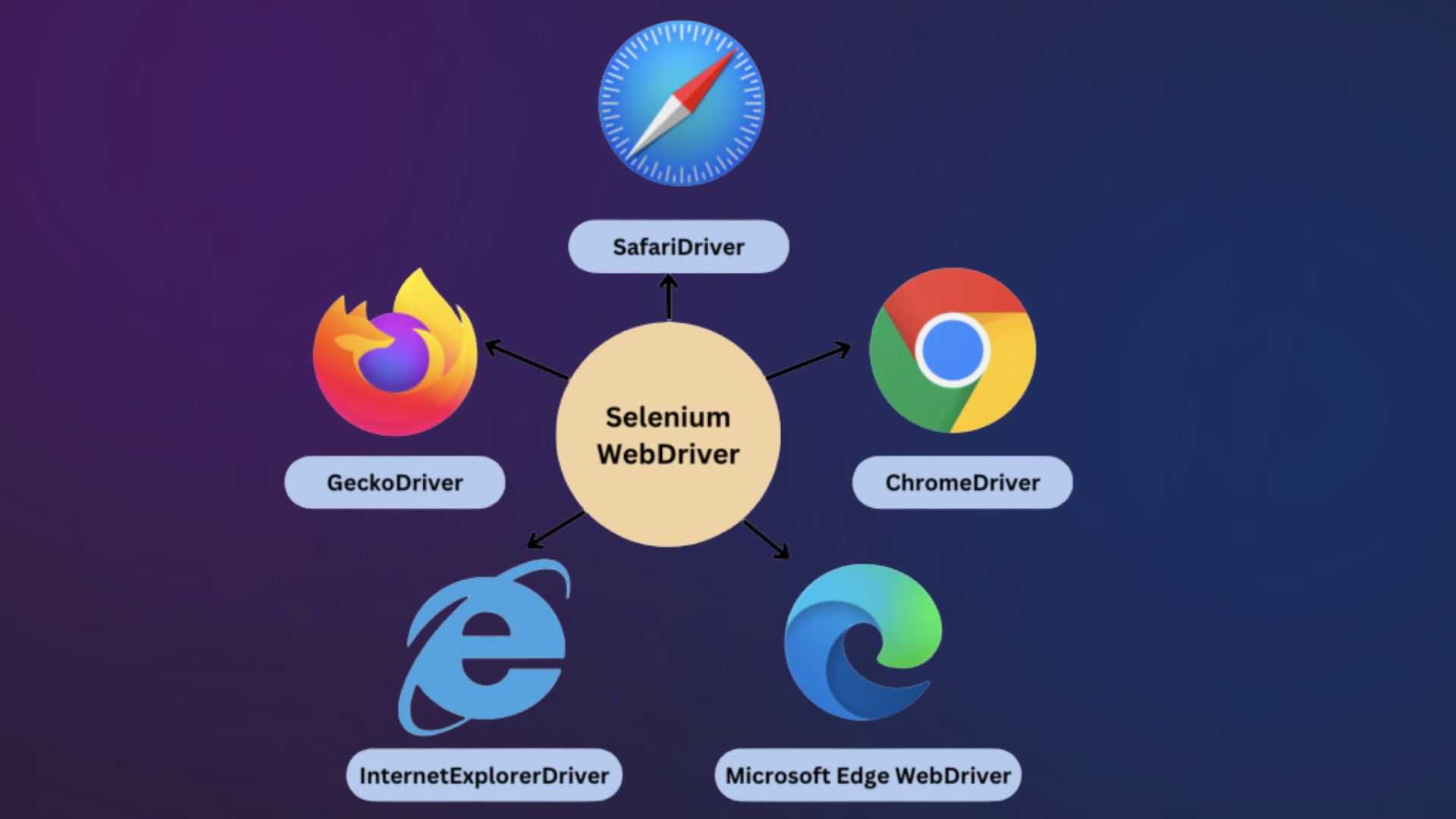
WebDriver in Selenium: Everything You Need to Know
Selenium is a popular open-source suite of tools for automating web browsers. It provides a powerful set of tools for testing web applications across different browsers and platforms. At the heart of Selenium lies the WebDriver, a crucial component that enables efficient communication between the web browser and the automation script.
Understanding WebDriver
WebDriver is a platform and language-agnostic protocol that serves as a browser’s remote control interface. It facilitates the programmatic control of a web browser, allowing automated tests to simulate user interactions, navigate web pages, and retrieve data from the browser. WebDriver is designed to be lightweight and efficient, providing a more robust and reliable solution than older browser automation tools.
Key Features of WebDriver
- Cross-Browser Compatibility: WebDriver supports multiple browsers, including Chrome, Firefox, Internet Explorer, Safari, and Edge, enabling cross-browser testing and ensuring web applications function consistently across different environments.
- Language Bindings: WebDriver provides language bindings for various programming languages, such as Java, Python, C#, Ruby, and JavaScript, allowing developers to write automation scripts in their preferred language.
- Element Locators: WebDriver offers several locator strategies to identify web elements, including ID, name, CSS selectors, XPath, etc. These locators enable precise targeting of specific elements on a web page, facilitating accurate interactions and data retrieval.
- Browser Interactions: WebDriver provides a rich set of commands and methods for interacting with browsers, such as navigating to URLs, switching between windows or frames, capturing screenshots, and executing JavaScript.
- Synchronization and Wait Strategies: WebDriver includes synchronization mechanisms and wait strategies to handle dynamic web pages and ensure reliable test execution, reducing flakiness and improving test stability.
Getting Started with WebDriver
To begin using WebDriver in Selenium, you’ll need to follow these steps:
- Download WebDriver: Depending on the browser you wish to automate, you must download the corresponding WebDriver executable. For example, you must download the ChromeDriver if you’re automating Chrome.
- Set Up Environment Variables: Configure your system’s environment variables to include the path to the WebDriver executable, ensuring that your automation scripts can locate and execute the WebDriver.
- Install Selenium Bindings: Install the appropriate Selenium language bindings or client libraries for your preferred programming language. These bindings provide a programmatic interface to interact with WebDriver.
- Write Automation Scripts: Using the Selenium bindings, write your automation scripts to navigate web pages, interact with elements, and perform various testing operations. Selenium provides a rich set of methods and commands to facilitate these actions.
- Run Automation Tests: Execute your automation scripts, and WebDriver will automatically launch the specified browser and perform the defined actions, simulating user interactions and validating the expected behavior of your web application.
Advanced WebDriver Capabilities
WebDriver offers several advanced capabilities to enhance automation testing:
- Parallel Testing: WebDriver supports parallel test execution, allowing multiple instances of the browser to run concurrently, significantly reducing test execution time.
- Headless Browser Testing: WebDriver can be configured to run browsers in headless mode, where the browser runs without a graphical user interface (GUI). This capability is particularly useful for continuous integration and deployment (CI/CD) pipelines or server-based testing environments.
- Remote WebDriver: WebDriver supports remote execution, where the browser instance runs on a different machine or in a cloud-based environment, enabling distributed testing and scalability.
- Page Object Model (POM): WebDriver promotes using the Page Object Model design pattern, which separates the test logic from the page elements, improving code maintainability and reusability.
WebDriver has become an essential tool in the world of web automation testing, providing a robust and reliable solution for interacting with web browsers programmatically. With its cross-browser compatibility, rich feature set, and language bindings, WebDriver empowers developers and testers to build comprehensive automation suites, ensuring high-quality web applications across multiple platforms and environments.